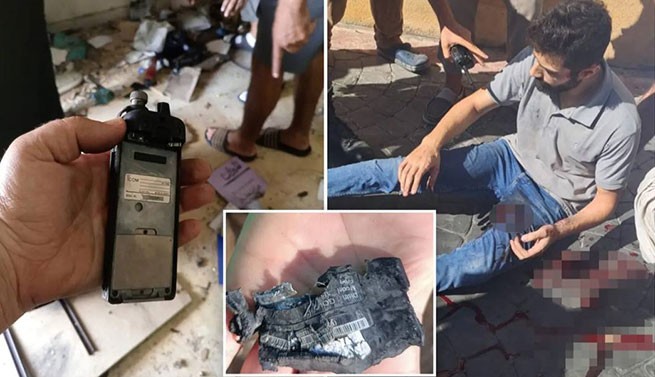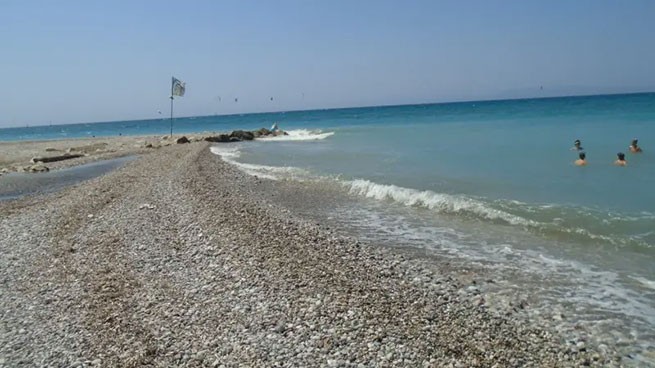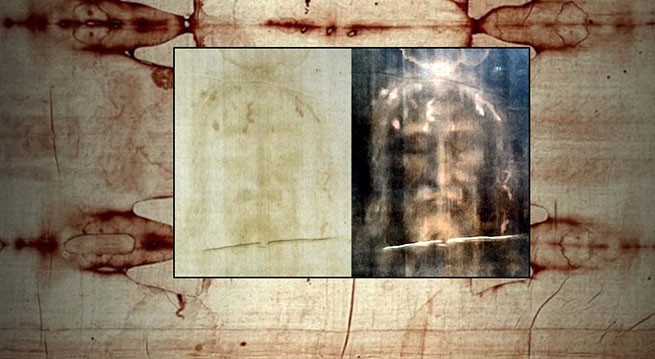The famous Shroud of Turin appears to have actually been used to wrap the body of Christ after his crucifixion! Italian researchers have used a new X-ray technique to date the material and confirmed that it was made around the time of Jesus, about 2,000 years ago.
From a chronological point of view, the Holy Shroud version is acceptable, since it corresponds to the time when Jesus Christ lived. The Shroud of Turin was first exhibited in the 1350s and was presented as the authentic burial shroud of Our Lord Jesus Christ. The cloth has a faint image of a bearded man from the front and back, and believers have always believed that it miraculously depicts Jesus Christ himself.
However, research conducted in the 1980s cast doubt on this version, attributing it to historical to the Middle Ages, hundreds of years after the death of Christ. Many claim that this shroud was used to wrap the body of Jacques de Molay, who was the last Grand Master of the Knights Templar, leading the order from April 20, 1292 until its dissolution by Pope Clement V in 1307.
The Bible says that Joseph of Arimathea wrapped Jesus' body in a linen shroud and placed it in a tomb. Verses 27:59-60 in the Gospel of Matthew reads: “Then Joseph took the body and wrapped it in a new linen cloth. He placed Jesus' body in a new tomb that he dug in the stone wall. He then closed the tomb by rolling a very large stone to cover the entrance. Having done this, he left.”
Before the Middle Ages, the history of the Shroud of Turin was dark and shrouded in mystery.
It is believed that after the crucifixion and resurrection of Christ (or after the destruction of Jerusalem by the Romans in 70 CE), it was taken to Edessa in Asia Minor (modern Urfa, Turkey). It became known as the Holy Mandylion or Edessa Icon because it was folded so that only the face in the open case was visible.
The Byzantines invaded Edessa in 944 AD with the intention of seizing the cloth and taking it back to Constantinople. The Fourth Crusade sacked Basileia in 1204, and by the 14th century Sindoni had disappeared. Historical references to the Shroud of Turin date back to 1354.
It is believed to have previously belonged to the Knights Templar, who are said to have held it for around 200 years. The last Knights Templar to own the shroud were Jacques de Molay and Geoffre de Charnay, who were burned at the stake in 1314 after the order was dissolved.
The first owner of the shroud can safely be called the French knight Geoffre de Charnay, who did not want to advertise the fact of its existence, perhaps because of the mysterious circumstances under which it fell into his hands, and perhaps because of his relationship with the Templars de Charnay.
He built a small church in Liret in France and, while his family was in financial difficulties, decided to display the shroud there. The bishop of the region, Henry of Poitiers, expressed his doubts about its authenticity and submitted a memorandum stating that after examining the Shroud he found it to be a fake and also stated that he had discovered the artist who painted it.
The shroud was immediately removed, only to be displayed again in 1389.
De Charnay's son, ignoring the local bishop, obtained permission from the Pope, acknowledging from the outset that it was not the original but a copy. The local bishop, Pierre d'Arcy, in a memorandum addressed to Pope Clement VII, called the shroud a forgery, citing previous investigations by Henry of Poitiers.
In 1452, the shroud was sold to Louis, Duke of Savoy, who erected a special chapel and placed the Shroud in Chambéry, France in 1464.
In 1532, a fire in the chapel damaged the Chindon, and the Savoy family moved it to Turin, Italy, where it remains to this day. The only time it was moved from Turin was during World War II, when it was placed in the monastery of Montevegine in Avellino, southern Italy, to remain in Turin forever.

The Shroud depicts a bearded man from the front and back, about 33 years old, about 1.80 m tall and weighing 77 kg. There are blood stains all over the cloth, which is explained by death by crucifixion. There are visible burn holes and a few drops of water left over from the fire of 1532. There are blood stains on the wrists and feet, indicating that he was crucified, and on his back there are marks from flagellation. On the face there are swellings, representing hematomas, which are especially noticeable on the right cheek. Traces of bruises and wounds are visible all over the body.

There is blood on the forehead, neck and long hair, and ulcers all around the head, probably caused by the crown of sharp thorns. On the chest and back there are abrasions, probably caused by a whip, an instrument of torture in Roman times. On the right shoulder blade there are square bruises from a blow with a heavy object, possibly the horizontal beam of the cross that the condemned man carried to the place of execution. On the right side of the chest there were traces of blood, which in their characteristics resemble traces of a blood fall.







More Stories
Pope refuses to celebrate first mass at restored Notre Dame Cathedral in Paris
New illumination of the Temple of Poseidon at Cape Sounion (video)
Greek monk warns of internet speculation surrounding Athos services